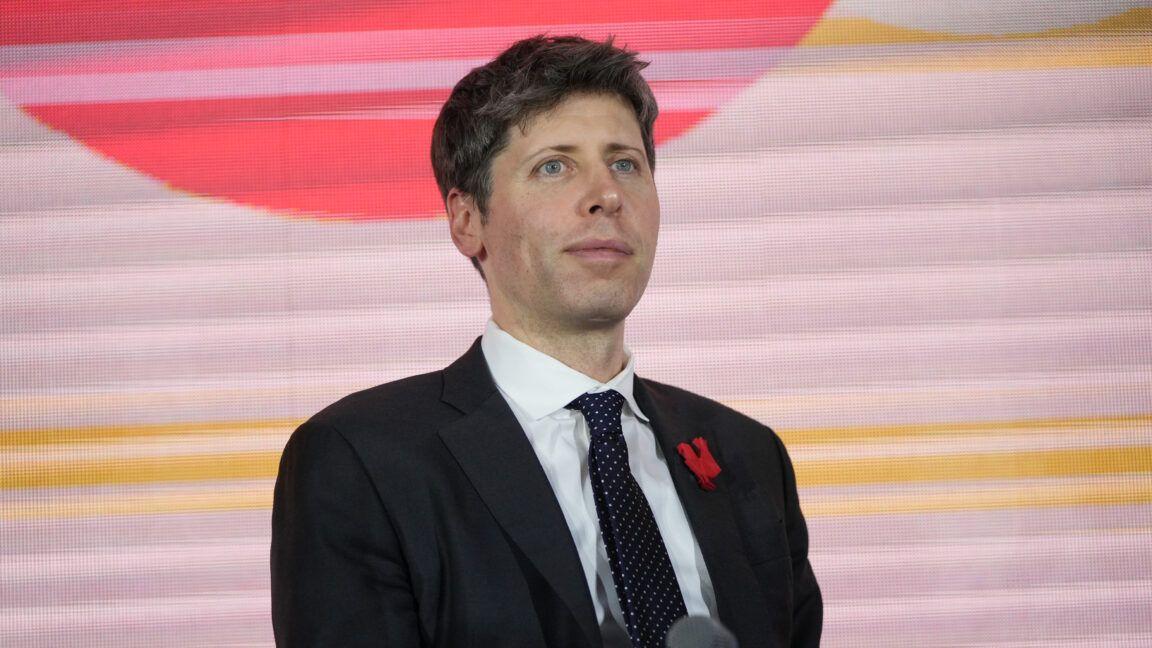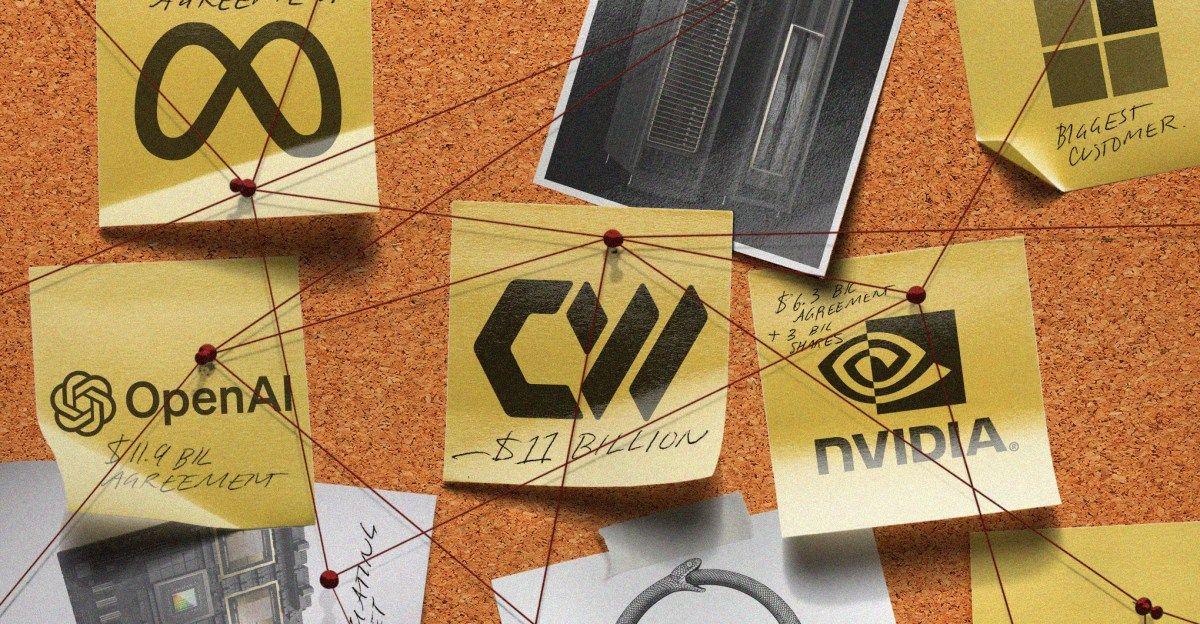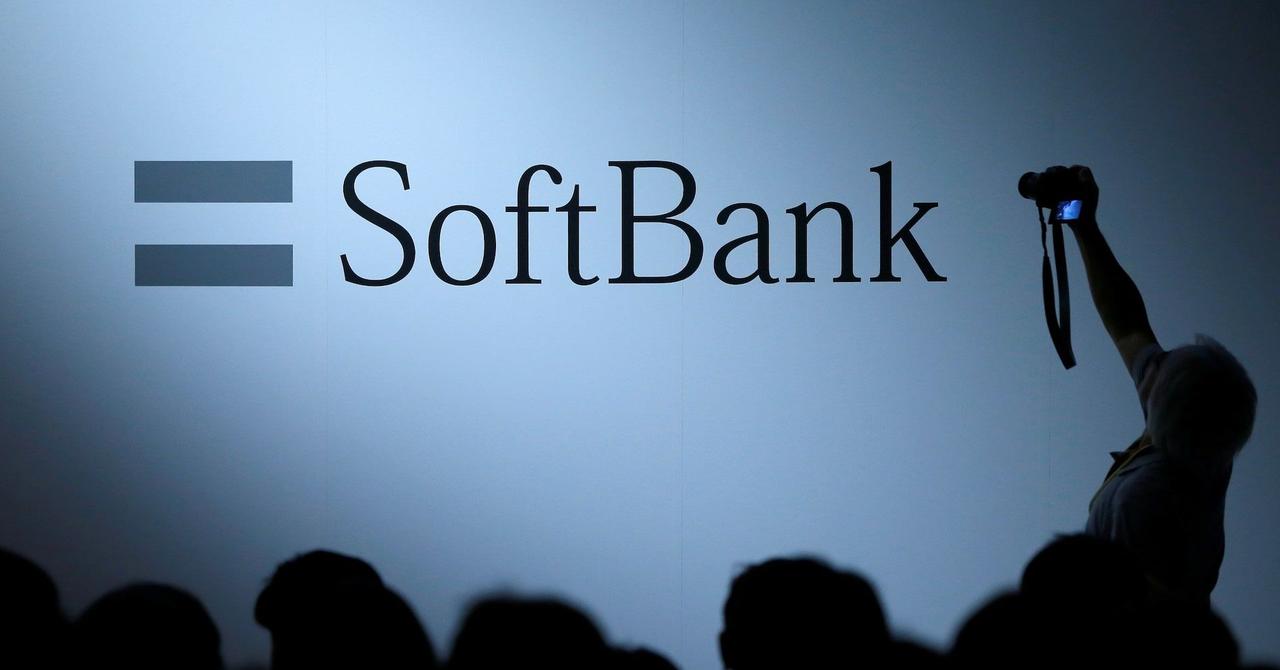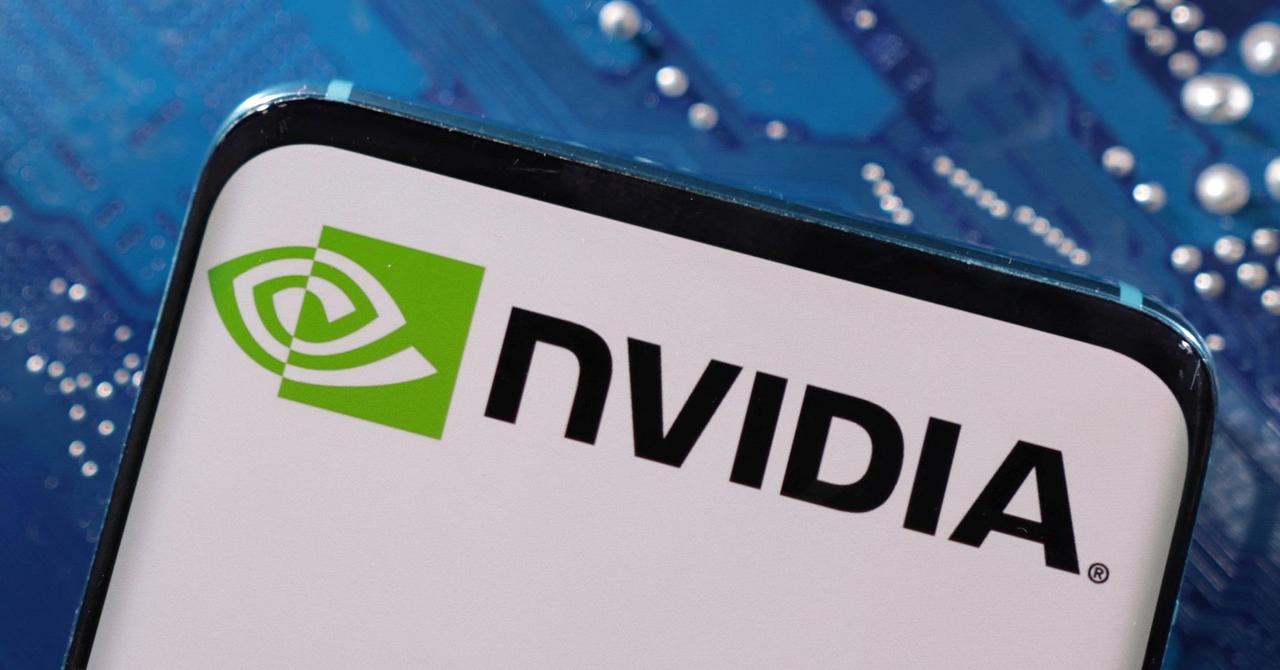AI Bubble Surpasses Dot-Com Era, Economists Warn of Potential Market Crash
9 Sources
9 Sources
[1]
AI bubble is worse than the dot-com crash that erased trillions, economist warns -- overvaluations could lead to catastrophic consequences
The only difference between then and now is that there's more to lose. Torsten Sløk, chief economist at American asset company, Apollo Global Management, has warned that the AI companies and their stock prices are more over-inflated than the dot-com companies of the early 2000s, suggesting that an even bigger crash could be coming. He highlighted 10 of the top-performing AI companies, then suggested that the only real difference between AI businesses today and the dotcom companies of the late 90s and early 2000s is that AI businesses are even more overvalued (via Gizmodo). The dot-com crash around the turn of the century saw companies rushing to adopt and take advantage of the internet. A relatively new technology and phenomenon at the time, but one that venture capitalists saw as having earning potential. Over the last five years of the 20th century, they invested trillions of dollars, and stock prices for publicly traded internet entities soared, only to come crashing down when the bottom dropped out of the market. By the early 2000s, many of the companies involved in the boom had gone bust, and even now, industry giants like Amazon have lost huge portions of their investments, earnings, and market capitalization. That's what Sløk argues is coming for the major AI firms. That's Apple, Microsoft, OpenAI, Meta, Google/Alphabet, Amazon, and a range of other companies. He highlights how these firms have seen huge upticks in their valuations and stock prices in recent years, driven by investments in AI ventures. This is completely out of whack with the earnings potential of these companies, Sløk argues, and suggests the majority of the gains made to the stock market during this AI boom have been because of the overperformance of these top stocks. That, he claims, is not going to last, and because the boom is bigger this time, the bust could be even worse. You can expand the tweet below to see the comparison of valuations. Although Sløk doesn't present a timeline for when any such bust could happen, it's clear even for us non-economists that the money being thrown around by some of the major tech companies is difficult to sustain. OpenAI recently accused Meta of offering $100 million signing bonuses to new AI talent. That's after it invested $14 billion in ScaleAI (only to see 200 employees fired from that company). CoreWeave is investing $6 billion in a new AI center, Amazon might be investing an additional $8 billion in Claude maker, Anthropic. Not to mention Nvidia's push to drive $500 billion in investment in "AI Factories," all while hoping that name catches on. "Buy the rumor, sell the news," is not what's happening here. Even if this wasn't quite to the overhyped levels of the dot-com crash, there are plenty of recent examples of tech trends seeming to encapsulate the future and then failing to deliver. Meta invested tens of billions in the Metaverse and then promptly pivoted to AI as if it never happened. NFTs and blockchain were going to change how art, finance, and investing work, and that still hasn't happened yet. Where each of those was constrained to a single company, or a niche market, though, AI is already everywhere, even without much of a profitable product to show for it. AI holds a lot of promise, perhaps a little like virtual reality, the metaverse, and blockchain technology, but does it warrant the hundreds of billions of investment it's getting already? Sløk argues no, and that when the world catches on, these companies, which have ridden high on a wave of hype and investment, may find their ephemeral silicon empires melt away into sand. What comes after that is even more speculative than a potential downfall, but if the dot-com analogy tracks, we could see huge consolidation, with many of the top companies surviving, but scaling back their investments dramatically. Speculative AI companies would likely fail, while those with more robust revenue streams, like Amazon, Google, and Meta, would likely survive, albeit diminished in their influence. Just as the dot-com crash didn't kill the internet, or all of the websites on it, the AI bubble bursting wouldn't kill AI, or make the technology less useful. It will continue to be developed and is likely to remain a useful, functional tool. However, perhaps we wouldn't need to see "AI" as a buzzword on every product we buy over the following few years.
[2]
Is today's AI boom bigger than the dotcom bubble?
ORLANDO, Florida, July 22 (Reuters) - Wall Street's concentration in the red-hot tech sector is, by some measures, greater than it has ever been, eclipsing levels hit during the 1990s dotcom bubble. But does this mean history is bound to repeat itself? The growing concentration in U.S. equities instantly brings to mind the internet and communications frenzy of the late 1990s. The tech-heavy Nasdaq peaked in March 2000 before cratering 65% over the following 12 months. And it didn't revisit its previous high for 14 years. It seems unlikely that we'll see a repeat of this today, right? Maybe. The market's reaction function appears to be different from what it was during the dotcom boom and bust. Just look at the current rebound from its post-'Liberation Day' tariff slump in early April - one of the fastest on record - or its rally during the pandemic. But despite all of these differences, there are also some worrying parallels. Investors would do well to keep both in mind. TOP 10 CLUB The most obvious similarity between these two periods is the concentration of tech and related industries in U.S. equity markets. The broad tech sector now accounts for 34% of the S&P 500's market cap, according to some data, exceeding the previous record of 33% set in March 2000. Of the top 10 companies by market capitalization today, eight are tech or communications behemoths. They include the so-called 'Magnificent 7' - Apple (AAPL.O), opens new tab, Amazon (AMZN.O), opens new tab, Alphabet (GOOGL.O), opens new tab, Meta (META.O), opens new tab, Microsoft (MSFT.O), opens new tab, Nvidia (NVDA.O), opens new tab and Tesla (TSLA.O), opens new tab - as well as Berkshire Hathaway (BRKa.N), opens new tab and JPMorgan (JPM.N), opens new tab. By contrast, only five of the 10 biggest companies in 1999 were tech firms. The other five were General Electric (GE.N), opens new tab, Citi, Exxon (XOM.N), opens new tab, Walmart (WMT.N), opens new tab, and Home Depot (HD.N), opens new tab. On top of that, the top 10 companies' footprint in the S&P 500 (.SPX), opens new tab today is much larger than it was back then. The combined market cap of the top 10 today is almost $22 trillion, or 40% of the index's total, significantly higher than the comparable 25% in 1999. This all reflects the fact that technology plays a much bigger role in the U.S. economy today than it did around the turn of the millennium. AI BUBBLE? By some measures, the current tech boom, driven in part by enthusiasm for artificial intelligence, is more extreme than the IT bubble of the late 1990s. As Torsten Slok, chief economist at Apollo Global Management, points out, the 12-month forward earnings valuation of today's top 10 stocks in the S&P 500 is higher than it was 25 years ago. However, it's worth remembering that the dotcom bubble was characterized by a frenzy of public offerings and a raft of companies with shares valued at triple-digit multiples of future earnings. That's not the case today. While the S&P tech sector is trading at 29.5 times forward earnings today, which is high by historical standards, this is nowhere near the peak of almost 50 times recorded in 2000. Similarly, the S&P 500 and Nasdaq are currently trading around 22 and 28.5 times forward earnings, compared with the dotcom peaks of 24.5 and over 70 times, respectively. $3 TRILLION INVESTMENT HURDLE With all that being said, a meaningful, prolonged market correction cannot be ruled out, especially if AI-driven growth isn't delivered as quickly as investors expect. AI, the new driver of technological development, will require vast capital outlays, especially on data centers, which may mean that earnings and share price growth in tech could slow in the short run. According to Morgan Stanley, the transformative potential of generative AI will require roughly $2.9 trillion of global data center spending through 2028, comprising $1.6 trillion on hardware like chips and servers and $1.3 trillion on infrastructure. That means investment needs of over $900 billion in 2028, they reckon. For context, combined capital expenditure by all S&P 500 companies last year was around $950 billion. Wall Street analysts are well aware of these figures, which suggests that at least some percentage of these huge sums should be factored into current share prices and expected earnings, but what if the benefits of AI take longer to deliver? Or what if an upstart (remember China's DeepSeek) dramatically shifts growth expectations for a major component of the index, like $4-trillion chipmaker Nvidia? Of course, technology is so fundamental to today's society and economy that it's difficult to imagine its market footprint shrinking too much, for too long, as this raises the inevitable question of where investor capital would go. It's therefore reasonable to question whether a tech crash today would take well over a decade to recover from. But, on the other hand, it's that type of thinking that has gotten investors into trouble before. (The opinions expressed here are those of the author, a columnist for Reuters.) By Jamie McGeever; Editing by Emelia Sithole-Matarise Our Standards: The Thomson Reuters Trust Principles., opens new tab * Suggested Topics: * European Markets Opinions expressed are those of the author. They do not reflect the views of Reuters News, which, under the Trust Principles, is committed to integrity, independence, and freedom from bias. Jamie McGeever Thomson Reuters Jamie McGeever has been a financial journalist since 1998, reporting from Brazil, Spain, New York, London, and now back in the US again. His experience and expertise are in global markets, economics, policy, and investment. Jamie's roles across text and TV have included reporter, editor, and columnist, and he has covered key events and policymakers in several cities around the world.
[3]
The AI boom is more overhyped than the 1990s dot-com bubble, says top economist
Serving tech enthusiasts for over 25 years. TechSpot means tech analysis and advice you can trust. The big picture: As tech giants pour more money into AI, some warn that a bubble may be forming. Drawing comparisons to the dot-com crash that wiped out trillions at the turn of the millennium, analysts caution that today's market has become too reliant on still-unproven AI investments. Torsten Slok, chief economist at Apollo Global Management, recently argued that the stock market currently overvalues a handful of tech giants - including Nvidia and Microsoft - even more than it overvalued early internet companies on the eve of the 2000 dot-com crash. The warning suggests history could soon repeat itself, with the buzzword "dot-com" replaced by "AI." In the late 1990s, numerous companies attracted venture capital in hopes of profiting from the internet's growing popularity, and the stock market vastly overvalued the sector before solid revenue could materialize. When returns failed to meet expectations, the bubble burst, wiping out countless startups. Slok says the stock market's expectations are even more unrealistic today, with 12-month forward price-to-earnings ratios now exceeding the peak of the dot-com bubble. A company's P/E ratio measures the relationship between its stock price and the profit it generates, with a high ratio reflecting optimism about future returns. Comparing S&P 500 ratios at five-year intervals from 1990 to 2025 clearly shows the dot-com spike in 2000. Similar spikes in 2020 and 2025 suggest the AI bubble may be even more pronounced. Click to enlarge What's more concerning is that in each spike, the top 10 companies' ratios far exceed the rest of the index. Such disparity suggests investments in those firms - mostly tech giants heavily betting on AI - have detached from reality before their newest technology can generate real profits. Companies like Nvidia, Microsoft, Apple, Amazon, Meta, Alphabet (Google), and Tesla account for most of the S&P 500's recent growth. Slok's warning echoes concerns from other industry leaders about the risks facing AI companies. Robin Li, CEO of Chinese internet giant Baidu, predicted that only about one percent of AI firms will survive if and when the bubble bursts. He said this will eventually lead to a more stable market with more realistic AI applications. Tech giants continue to make massive investments as AI's popularity grows, underscoring the high stakes in this rapidly evolving field. OpenAI is developing an AI-powered web browser to challenge Google Chrome's dominance. Meta is spending over $60 billion to build new AI data centers. Microsoft recently cut 9,000 jobs to offset costs from its new AI infrastructure, estimated at $80 billion. Amazon has unveiled plans for agentic AI, signaling that the race for AI leadership shows no signs of slowing.
[4]
Wall Street’s AI Bubble Is Worse Than the 1999 Dot-com Bubble, Warns a Top Economist
A chief economist at investment giant Apollo says the top ten AI stocks are more detached from reality than the tech titans of the 1990s were. His chart is a stark warning that history is about to repeat itself. Back in 1999, Wall Street lost its collective mind over the internet. Companies with no revenue were suddenly worth billions, "eyeballs" were treated as currency, and market analysts predicted a frictionless future where everything would be digital. Then the bubble burst. Between March 2000 and October 2002, an estimated five trillion dollars in market value vanished into thin air. Today, it is happening again. This time, the magic word is not “.com.†It is “AI.†According to Torsten Slok, the influential chief economist at Apollo Global Management, a major global investment firm, the current AI driven market bubble is even more stretched than the dot com frenzy of the late 1990s. And he has the data to prove it. “The difference between the IT bubble in the 1990s and the AI bubble today is that the top 10 companies in the S&P 500 today are more overvalued than they were in the 1990s,†Slok wrote in a recent research note that was widely shared across social media and financial circles. The chart from Apollo compares the 12 month forward price to earnings (P/E) ratios of the top ten companies in the S&P 500 against the rest of the index. In plain English, a P/E ratio measures how expensive a stock is by comparing its price to its profits. A high P/E ratio means investors are paying a premium and are betting on strong future growth. Slok's chart reveals something stunning: in 2025, the P/E ratios of the top ten companies are even higher than they were at the absolute peak of the dot com bubble in 2000. This means investors are betting so aggressively on AI giants like Nvidia, Microsoft, Apple, and Google that their stock prices have become detached from their actual earnings, even more so than tech darlings like Cisco and AOL were in the nineties. The top 10 companies driving this frenzy, which hold the most significant market value on Wall Street, include tech titans like Nvidia, Microsoft, Apple, Alphabet (Google), Amazon, and Meta. It is a super concentrated AI frenzy that is pushing a handful of mega cap stocks into nosebleed territory. You have probably heard that the S&P 500 is performing well this year. Here is the uncomfortable truth: most of those gains are coming from just those ten companies. The other 490 companies in the index are barely moving. This kind of narrow rally is incredibly risky. It means the health of the entire stock market is dependent on the performance of a very small number of firms. If Nvidia sneezes, the entire market could catch a cold. The problem is that Wall Street is treating AI as if it has already fulfilled every promise, from a productivity revolution to trillion dollar cost savings. The potential is being priced as a certainty, even though most of those gains have not yet materialized. In 1999, the internet was real. It did change everything. But that fact did not stop investors from wildly overpaying for companies that could not deliver on the hype. The parallels with today’s AI excitement are chilling. Every corporate earnings call now dutifully mentions an "AI strategy," just like every company in 1999 slapped on a “.com†to its name. Stocks are surging on the vague potential of AI, not necessarily on real, current revenue. Wall Street is pricing in a perfect AI future without acknowledging the enormous risks: regulatory crackdowns, staggering compute costs, model hallucinations, or simply a slower than expected adoption rate. As Slok’s chart shows, the market is pricing these top ten AI heavy firms as if they are invincible. That is never a good sign. This is not a question of whether AI will change the world. It will, just as the internet did. The real question is how much investors are willing to pay today for profits that might not arrive for years, if ever. If history teaches us anything, it is that bubbles do not pop because the technology is fake. They pop when investor expectations dramatically outpace reality and the flow of easy money dries up. The more Wall Street bets on AI perfection, the more fragile this market rally becomes. If corporate earnings do not catch up to these sky high valuations, and soon, the market may not even need a specific trigger to deflate. The valuations alone could do the job. And when bubbles pop, they do not do so politely. They implode, wiping out trillions in value and shattering investor trust in the process. The technology called AI will certainly survive. The top ten companies likely will too. But the portfolios chasing this dream without a parachute might not. Just like in 2000, when it seemed the internet had made financial gravity obsolete, the AI hype train is speeding toward a cliff it thinks it can fly over. Torsten Slok is just reminding us that we have been here before.
[5]
Economist Warns the AI Bubble Is Worse Than Immediately Before the Dot-Com Implosion
For years now, certain experts have warned that the AI industry is a massive bubble waiting to burst. The enormous hype driving a market frenzy, they say, could lead to a collapse if it's exposed to be built on widespread overpromising. Most recently, Apollog Global Management chief economist Torsten Slok warned that the current AI bubble is starting to look even worse than the market conditions leading up to the dot-com implosion of the late 1990s. "The difference between the IT bubble in the 1990s and the AI bubble today is that the top 10 companies in the S&P 500 today are more overvalued than they were in the 1990s," Slok wrote in a note that was widely circulated online. A chart shows the price to earnings (P/E) ratios of the top ten performing companies in the S&P 500 against the rest of the index. A high P/E ratio, generally speaking, indicates that a stock's price is extremely high relative to its earnings. The chart shows that the P/E ratio continues to creep higher and higher over the last five years, well above the rates we saw throughout the 1990s. In other words, the top ten companies in the S&P 500 are far more overvalued than they were in the years leading up to the dot-com crisis. Slok is ringing the alarm bells over the apparent market frenzy, driven by tech titans that are heavily invested in the AI industry. By index weighting, AI chipmaker Nvidia leads the pack in the S&P 500, followed by Microsoft, Apple, Amazon, Meta, and Alphabet, all of which have made multibillion-dollar investments in AI. Yet earnings are still lagging far behind the astronomical spending on building out infrastructure, with some tech leaders already showing early signs of hesitancy, given the massive P/E discrepancy. Slok is far from the first to compare the current hype surrounding AI to the dot-com bubble. Even in 2023, when OpenAI's ChatGPT was only a few months old, analysts warned investors were overinvesting in unproven tech. AI critic Ed Zitron has also compared the situation to the subprime mortgage crisis of 2007, which led to the collapse of the US housing market. Silicon Valley's endless appetite for AI was seriously tested earlier this year when a Chinese AI company called DeepSeek demonstrated that its AI chatbot, which cost a fraction of the computing power to train as conventional models, could trade blows with the latest large language models from the likes of OpenAI, Meta, and Google, triggering a more than $1 trillion selloff at the time. How long investors will continue to prop up sky-high valuations of the key players in the AI race remains to be seen. Despite an explosion in popularity for tools like ChatGPT and Google's Gemini, revenue still pales in comparison to the tens of billions of dollars being spent on data center expansions. According to an S&P Global research note published in June, the generative AI market is projected to grow at a breakneck pace, reaching an aggregate revenue of $85 billion by 2029. However, when you consider that's only a little more than the over $60 billion Meta will spend on capital expenditures this year alone, tech companies still have a lot of reassuring to do that their massive bet on AI will eventually pay off -- and not lead to the sequel of one of the biggest stock market crashes in history.
[6]
Apollo's chief economist warns the AI bubble is even worse than the 1999 dot-com bubble
Torsten Sløk, in a recent research note, wrote "The difference between the IT bubble in the 1990s and the AI bubble today is that the top 10 companies in the S&P 500 today are more overvalued than they were in the 1990s." Put another way: Investors are betting so heavily on AI that the stock price of companies like Nvidia, Microsoft, Apple and others have become detached from their earnings. A chart Sløk included compared the 12-month forward price-to-earnings (P/E) ratios of the S&P's top 10 companies to the rest of the index and the S&P 500 as a whole. And today's bubble is even bigger than the one that marked the end of the dot-com era. While the S&P has hit new records recently and is currently near an all-time high, Sløk argues the performance boost is due to the rise of the Top 10 stocks. Investors, he worries, are buying the hype and paying prices as if the promises and boasts of these firms (such as trillion-dollar savings and world-changing breakthroughs) are a certainty. The 1990s were a lesson that not every promise would or could become reality. And even though many of those top companies are profitable, compared to the losses of many dot-com darlings, the fundamentals don't justify the multiples. Sløk has sounded other warnings about the economy. In June, he said he believed the U.S. was at a critical inflection point for stagflation, where the economy continues to grow, but inflation remains high. He blamed tariffs for that possibility.
[7]
AI stocks in bubble trouble - are Nvidia, Microsoft in danger? Economist says it's worse than the Dot-Com crash of 1999
Are we heading toward another tech market crash, one that is even bigger than the dot-com collapse of the late '90s? According to Torsten Sløk, chief economist at Apollo Global Management, we might be, and this time, the bubble is being driven by artificial intelligence, as per a report. In a recent research note, Sløk warned that stocks like Nvidia, Microsoft, and Apple, along with seven other companies, have soared so high on AI enthusiasm that their prices are now dangerously detached from reality, as per a Fortune report. Sløk wrote in his research note that, "The difference between the IT bubble in the 1990s and the AI bubble today is that the top 10 companies in the S&P 500 today are more overvalued than they were in the 1990s," as quoted by Fortune in its report. According to the report, currently investors are betting so heavily on AI that the stock price of companies like Nvidia, Microsoft, Apple and others have become detached from their earnings. ALSO READ: Why can't this Wells Fargo banker leave China? The Chenyue Mao case everyone's talking about Sløk even included a chart to explain his analysis, as per Fortune. In the chart, he compared the 12-month forward price-to-earnings (P/E) ratios of the S&P's top 10 companies to the rest of the index and the S&P 500 as a whole, which shows that today's bubble is even bigger than the one that marked the end of the dot-com era, as reported by Fortune. According to the Fortune report, although most of those top companies are profitable, compared to the losses of many dot-com darlings before the market crash at that time, the fundamentals do not justify the multiples. ALSO READ: OpenAI unveils ChatGPT Agent: Too tired to plan your date, shop online, or create a slide deck? This new AI tool has you covered Even though the S&P has hit new records recently and is currently close to an all-time high, Sløk pointed out that the performance boost is mainly because of the rise of the Top 10 stocks, according to the Fortune report. He is concerned that investors are buying the hype and paying prices as if the promises and boasts of these firms, like claims of trillion-dollar savings and world-changing breakthroughs, are already a certainty, as per the report. The Fortune report highlighted that the 1990s were a lesson that not every promise would or could actually become a reality. Sløk's not the only warning sounding the alarm, even Alibaba Group Chair Joe Tsai has warned that US AI stocks are in a bubble, as has long-time tech exec Tom Siebel, as reported by Fortune. ALSO READ: Biggest piece of Mars on Earth sells for $5.3 million -- meet the meteorite that shocked Sotheby's Why are people investing so heavily in AI? Because AI is seen as the next big revolution, capable of saving companies money, transforming industries, and driving future growth, as per the Fortune report. Are companies like Nvidia and Microsoft really in danger? They're strong businesses, but if their stock prices are built on unrealistic expectations, any disappointment could cause a sharp drop, as per Torsten Sløk's analysis.
[8]
Overvalued AI Stocks Like Nvidia, Microsoft May Trigger Market Crash Worse Than The Dot-Com Bubble, Economist Warns - Alibaba Gr Hldgs (NYSE:BABA), Apple (NASDAQ:AAPL)
The current artificial intelligence (AI) frenzy could potentially trigger a market crash more severe than the dot-com bubble burst of 1999, according to a leading economist. What Happened: Torsten Sløk, Chief Economist at Apollo Global Management, voiced his concerns about the inflated valuation of AI technology in a recent research note, as reported by Fortune. Sløk noted, "The difference between the IT bubble in the 1990s and the AI bubble today is that the top 10 companies in the S&P 500 today are more overvalued than they were in the 1990s." Heavy investment in AI has resulted in a disconnection between stock prices and earnings for companies such as Nvidia Corp. NVDA, Microsoft Corp. MSFT and Apple Inc. AAPL. Sløk presented a chart comparing the 12-month forward price-to-earnings (P/E) ratios of the S&P 500's top 10 companies with those of the rest of the index and the overall S&P 500, indicating a bubble potentially even larger than during the dot-com era. Despite the S&P hitting new records and approaching its all-time high, Sløk contends that the rally is largely driven by gains in the top 10 stocks. He warns that investors are getting caught up in the hype and paying inflated prices as if these companies' promises are guaranteed, which could ultimately trigger a major market crash. Sløk cautioned that the 1990s showed us not all promises can -- or will -- be fulfilled. He also noted that although many of these top companies are profitable, their fundamentals do not justify the multiples. SEE ALSO: Bill Gates Says Elon Musk Was 'Super Mean' After He Shorted Tesla Stock -- 'But He's Super Mean to So Many People' Why It Matters: Sløk is not the only prominent figure to have raised concerns about the AI bubble. Earlier this year, Alibaba BABA Chairman Joe Tsai warned about a potential bubble in the AI data center construction sector. He cautioned that the rapid expansion of data centers could surpass the early demand for AI services. In a similar vein, Microsoft CEO Satya Nadella compared the current AI frenzy to the dot-com bubble and pushed for measuring AI's impact with GDP growth. Billionaire investor Ray Dalio also raised alarms over the soaring valuations of U.S. AI stocks, warning of a potential bubble fueled by high prices and interest rate risks. Despite these warnings, the AI sector continues to attract significant attention. Tech analyst Dan Ives recently listed his top five picks for the second half of 2025, reiterating that the "golden age of tech" was here with the AI revolution at the forefront. On a year-to-date basis, First Trust Nasdaq AI and Robotics ETF ROBT, Invesco AI and Next Gen Software ETF IGPT and Global X Robotics and Artificial Intelligence ETF BOTZ surged 9.72%, 9.48% and 2.75%, respectively. READ MORE: Why Nvidia Still Looks Like A Bargain At A $4 Trillion Market Cap Image via Shutterstock Disclaimer: This content was partially produced with the help of AI tools and was reviewed and published by Benzinga editors. AAPLApple Inc$210.570.26%Stock Score Locked: Edge Members Only Benzinga Rankings give you vital metrics on any stock - anytime. Unlock RankingsEdge RankingsMomentum30.49Growth32.37Quality76.23Value9.26Price TrendShortMediumLongOverviewBABAAlibaba Group Holding Ltd$117.980.58%BOTZGlobal X Robotics & Artificial Intelligence ETF$33.290.21%IGPTInvesco AI and Next Gen Software ETF$49.73-0.36%MSFTMicrosoft Corp$512.750.21%NVDANVIDIA Corp$173.760.44%ROBTFirst Trust Nasdaq Artificial Intelligence and Robotics ETF$49.520.34%Market News and Data brought to you by Benzinga APIs
[9]
AI Bubble Is More Unhinged Than Dot-Com -- A Chilling Warning - Global X Robotics & Artificial Intelligence ETF (NASDAQ:BOTZ), Invesco S&P 500 Equal Weight ETF (ARCA:RSP), ProShares Short QQQ (ARCA:PSQ)
Today's AI-fueled market frenzy is even more dangerously inflated than the 1990s internet bubble that ended with a historic crash in 2000. That's according to Apollo's chief economist Torsten Slok. This time, it's not just hype -- it's concentrated, institutional, and sitting atop the S&P 500's biggest names, he adds. Related: The Last Time This Warning Flashed, S&P 500 Crashed The Most Since 2008 Top-Heavy Trouble Back in 2000, the top 10 companies in the S&P 500 had a price-to-earnings (P/E) ratio of 25 -- lofty, but still loosely tethered to fundamentals. Today? That same top 10 group, now dominated by AI darlings like Nvidia Corp NVDA, Microsoft Corp MSFT, and Alphabet Inc GOOGL GOOG, carries a P/E of 25 once again... but with far more weight. What's different now, Slok warns, is that the rest of the market isn't anywhere near as stretched. The top-heavy S&P is showing signs of structural imbalance -- making the AI bubble both narrower and potentially more dangerous. While the overall S&P 500 P/E ratio sits at a seemingly reasonable 20, the ex-top-10 group has a P/E of just 20, indicating that the bulk of the valuation risk sits squarely on the backs of a few AI titans. If sentiment cracks, the fallout won't be gradual -- it'll be violent. How To Hedge Or Harvest The AI Mania For investors seeking to navigate the storm, ETFs provide a practical way to express their views. If you believe the bubble still has room to inflate, the Global X Robotics & Artificial Intelligence ETF BOTZ gives exposure to a broad range of AI-focused companies. But if you're feeling the chill from Slok's warning, consider defensive hedges like the Invesco S&P 500 Equal Weight ETF RSP, which dilutes mega-cap exposure, or ProShares Short QQQ PSQ to bet against the froth. With valuations this stretched and history offering a sobering mirror, the AI trade might not end in a bang -- but it could still blow up. Read Next: Warren Buffett Indicator Soars To 208%, Surpassing Dot-Com, 2008 Levels Image: Shutterstock BOTZGlobal X Robotics & Artificial Intelligence ETF$32.80-0.64%Stock Score Locked: Edge Members Only Benzinga Rankings give you vital metrics on any stock - anytime. Unlock RankingsEdge RankingsMomentum50.89Price TrendShortMediumLongOverviewPSQProShares Short QQQ$33.240.57%RSPInvesco S&P 500 Equal Weight ETF$185.050.82%GOOGAlphabet Inc$190.44-0.37%GOOGLAlphabet Inc$189.50-0.32%MSFTMicrosoft Corp$507.52-0.50%NVDANVIDIA Corp$168.23-1.84%Market News and Data brought to you by Benzinga APIs
Share
Share
Copy Link
Economists and analysts are drawing parallels between the current AI boom and the dot-com bubble of the late 1990s, warning that the overvaluation of AI companies could lead to a significant market crash.
AI Bubble Eclipses Dot-Com Era Valuations
The artificial intelligence (AI) boom has reached a fever pitch, with economists and analysts drawing alarming parallels to the dot-com bubble of the late 1990s. Torsten Slok, chief economist at Apollo Global Management, has issued a stark warning that the current AI market bubble is even more inflated than its predecessor, potentially setting the stage for a catastrophic market crash
1
4
.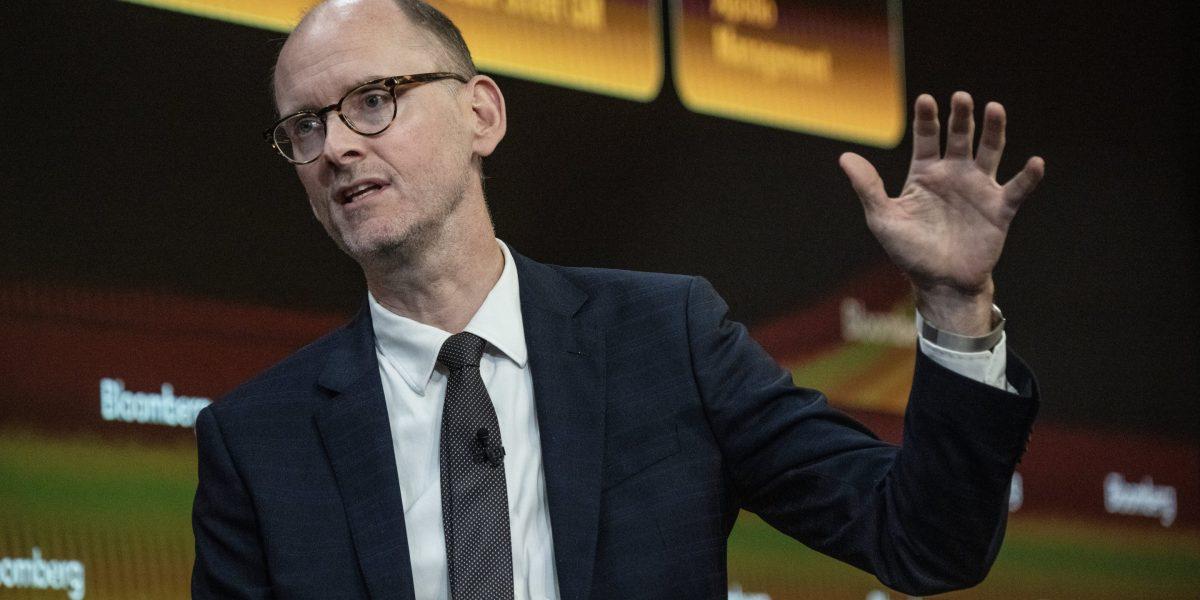
Source: Fortune
Overvaluation of AI Companies
Slok's analysis reveals that the top 10 companies in the S&P 500, predominantly tech giants heavily invested in AI, are more overvalued today than during the peak of the dot-com bubble
2
. The 12-month forward price-to-earnings (P/E) ratios of these companies have surpassed the levels seen in 2000, indicating a significant disconnect between stock prices and actual earnings3
.Key points of concern include:
- The tech sector now accounts for 34% of the S&P 500's market cap, exceeding the previous record of 33% set in March 2000
2
. - Eight out of the top 10 companies by market capitalization are tech or communications behemoths, including the 'Magnificent 7': Apple, Amazon, Alphabet, Meta, Microsoft, Nvidia, and Tesla
2
. - The combined market cap of the top 10 companies is almost $22 trillion, or 40% of the S&P 500's total, significantly higher than the 25% seen in 1999
2
.
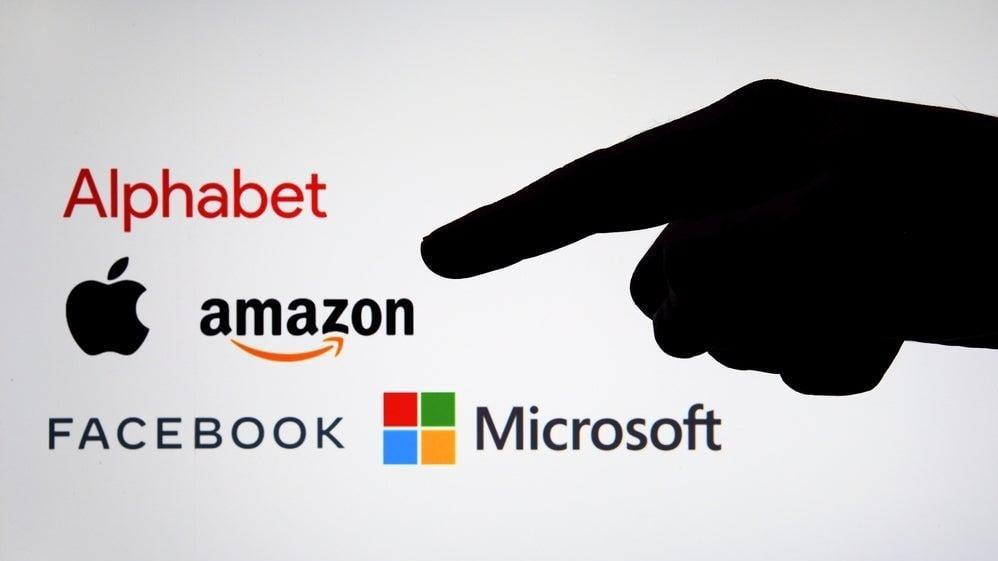
Source: Gizmodo
Investment Frenzy and Market Risks
The AI boom has triggered a massive influx of capital into the sector, reminiscent of the dot-com era's enthusiasm for internet-related companies. However, the scale of investment required for AI infrastructure is staggering:
- Morgan Stanley estimates that $2.9 trillion in global data center spending will be needed through 2028 to realize the potential of generative AI
2
. - Tech giants are making enormous investments, with Meta spending over $60 billion on new AI data centers and Microsoft reportedly allocating $80 billion for AI infrastructure
3
5
.
Related Stories
Potential Consequences and Market Vulnerability
The concentration of market gains in a handful of AI-focused companies has made the overall market highly vulnerable to fluctuations in these stocks. Experts warn of several potential risks:
- If AI-driven growth fails to materialize as quickly as investors expect, a significant market correction could occur
2
. - The narrow rally in AI stocks means that the entire market's health is dependent on the performance of a small number of firms
4
. - Regulatory crackdowns, high compute costs, and slower-than-expected adoption rates could all contribute to bursting the AI bubble
4
.
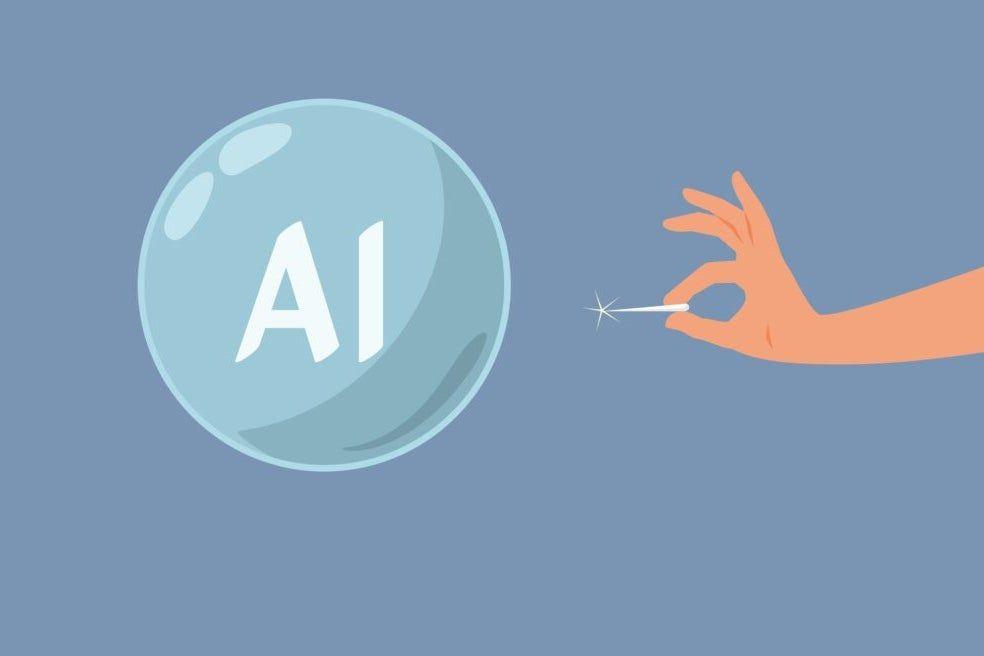
Source: Benzinga
Historical Parallels and Future Outlook
While the technology underlying the AI boom is real and transformative, much like the internet was during the dot-com era, the market's expectations may be outpacing reality. Robin Li, CEO of Baidu, predicts that only about 1% of AI firms will survive if the bubble bursts, eventually leading to a more stable market with realistic AI applications
3
.As the AI hype train continues to accelerate, investors and industry observers are left to wonder whether history is about to repeat itself, potentially wiping out trillions in market value and reshaping the tech landscape for years to come
1
4
5
.References
Summarized by
Navi
[1]
Related Stories
Recent Highlights
1
Meta acquires Manus for $2 billion, adding revenue-generating AI agents to its platforms
Business and Economy

2
Nvidia locks in $20 billion Groq deal, securing AI chip rival's technology and talent
Business and Economy
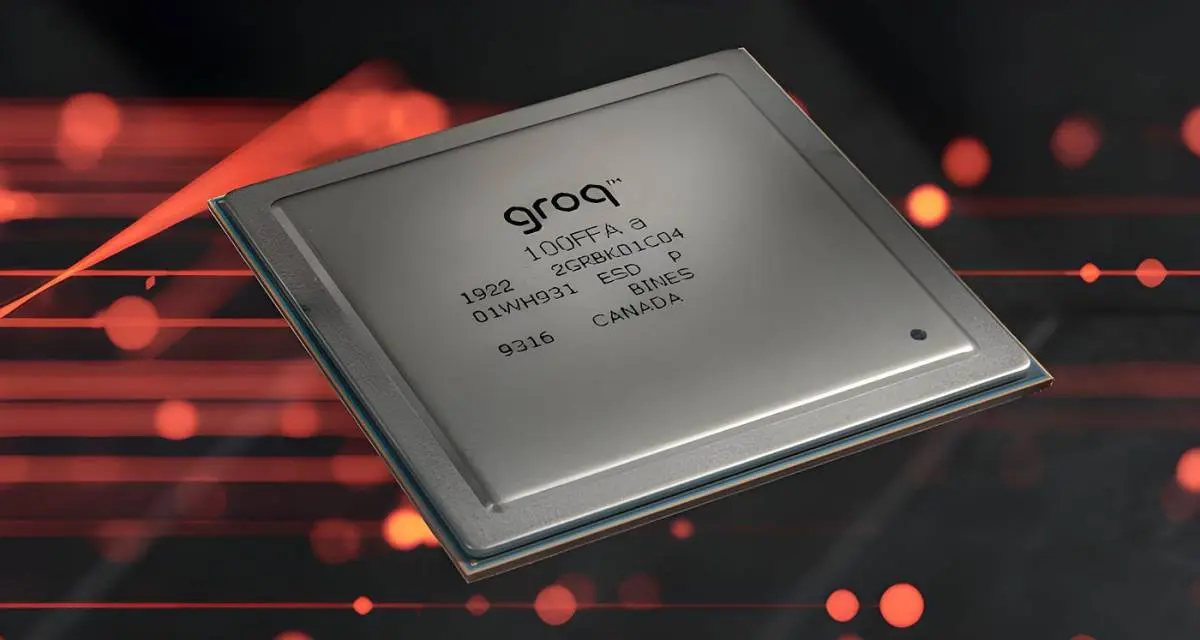
3
Geoffrey Hinton warns AI job replacement will accelerate in 2026 as systems gain new capabilities
Technology



